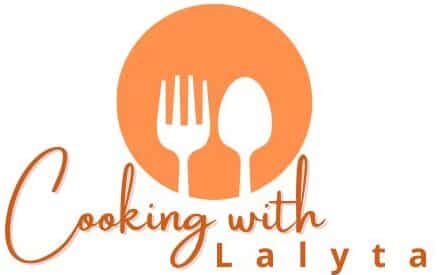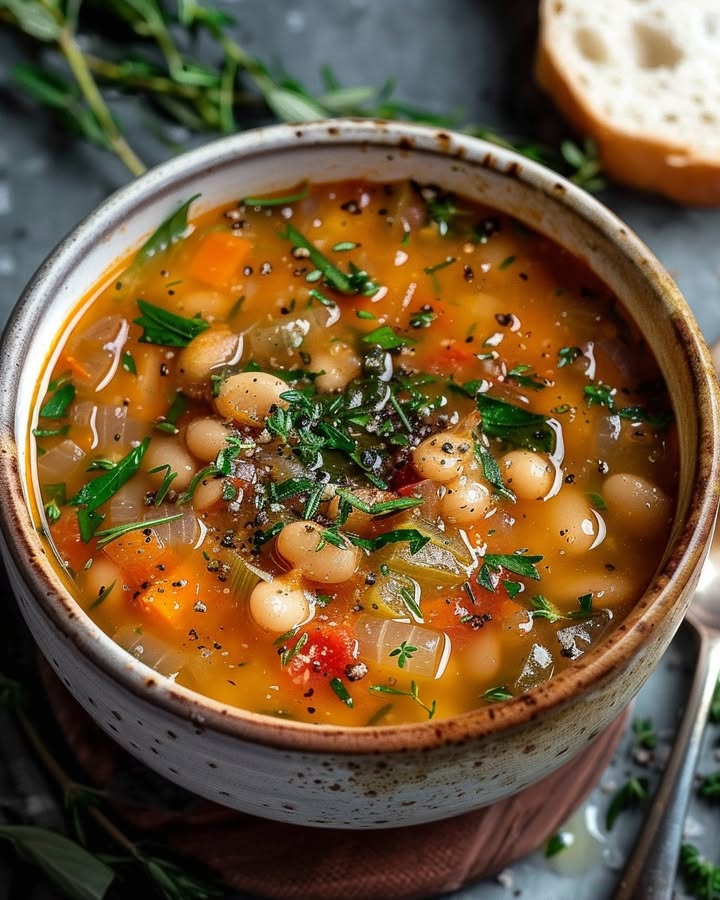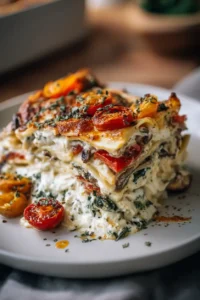Classic Rustic Tuscan Bean Soup with Fresh Herbs: A Hearty Italian Comfort Dish
Nothing warms the soul quite like a bowl of Classic Rustic Tuscan Bean Soup with Fresh Herbs. This traditional Italian dish combines creamy cannellini beans, aromatic vegetables, and fragrant herbs in a rich broth that delivers comfort in every spoonful. Whether you need a cozy weeknight dinner or an impressive starter for guests, this soup brings authentic Tuscan flavors to your table with minimal effort.
The magic of Classic Rustic Tuscan Bean Soup with Fresh Herbs lies in its simplicity. Fresh rosemary, thyme, and sage infuse the broth with earthy notes while garlic and onions build depth. Meanwhile, the beans provide a velvety texture that makes each bite satisfying. Serve it with crusty bread for dipping, and you have a complete meal that celebrates rustic Italian cooking at its finest.
Quick Recipe Highlights
- Flavor Profile: Savory and herbaceous with a subtle sweetness from caramelized onions and garlic. The fresh herbs add complexity while the beans create a creamy base.
- Texture: Silky smooth with tender beans and just enough broth to keep it hearty without becoming too thick.
- Aroma: The scent of rosemary and thyme fills the kitchen as the soup simmers, creating an inviting atmosphere.
- Visual Appeal: The golden broth contrasts beautifully with the white beans and flecks of green herbs for a rustic presentation.
- Skill Level Needed: Beginner-friendly with straightforward techniques that anyone can master.
- Special Equipment: A heavy-bottomed pot or Dutch oven ensures even cooking and prevents burning.
Recipe Overview
- Difficulty Level: This Classic Rustic Tuscan Bean Soup with Fresh Herbs requires basic chopping and simmering skills, making it perfect for home cooks of all levels.
- Category: A versatile dish that works as a main course, starter, or side depending on portion size.
- Cuisine: Rooted in Tuscan peasant cooking, this soup reflects Italy’s tradition of transforming humble ingredients into extraordinary meals.
- Cost: Budget-friendly with pantry staples and fresh herbs as the primary investments.
- Season: Ideal for fall and winter but light enough for spring evenings when served with a crisp salad.
- Occasion: Equally suited for casual family dinners or elegant dinner parties with artisan bread and wine pairings.
Why You’ll Love This Recipe
The Classic Rustic Tuscan Bean Soup with Fresh Herbs delivers restaurant-quality flavor without complicated techniques. First, the combination of fresh herbs and slow-simmered broth creates layers of taste that develop beautifully as the soup cooks. Second, the recipe adapts easily to dietary preferences while maintaining authentic character. Third, it packs plant-based protein and fiber for a nutritious meal that satisfies.
Beyond taste, this soup offers practical benefits for busy cooks. You can prepare most ingredients ahead and store them for quick assembly later. Additionally, leftovers taste even better the next day as the flavors continue melding. Finally, the dish costs significantly less than dining out while delivering comparable quality.
Nutritionally, Classic Rustic Tuscan Bean Soup with Fresh Herbs supports wellness goals without sacrificing satisfaction. Cannellini beans provide protein and fiber that promote digestion and sustained energy. Meanwhile, olive oil contributes heart-healthy fats and the herbs offer antioxidants. For those watching sodium, you can easily control salt levels during preparation.
Socially, this soup creates opportunities for connection. Its comforting aroma draws people to the kitchen and its shareable nature makes it ideal for gatherings. You can double the recipe effortlessly when hosting and customize toppings to suit different preferences. Guests often request the recipe after tasting it.
Economically, the dish maximizes value through affordable ingredients that stretch across multiple meals. A single pot yields generous portions that freeze well for future quick dinners. Compared to meat-based entrees, it delivers comparable protein at a fraction of the cost while aligning with plant-forward eating trends.
Historical Background and Cultural Significance
The origins of Classic Rustic Tuscan Bean Soup with Fresh Herbs trace back to Italy’s peasant cooking traditions. Tuscan farmers relied on hardy beans as protein sources when meat proved scarce or expensive. Over generations, they perfected methods for coaxing maximum flavor from simple ingredients through slow cooking and herb infusion.
Culturally, this soup represents the Italian philosophy of cucina povera or “poor kitchen” that transforms basic components into extraordinary dishes. Tuscan cooks traditionally used stale bread to thicken the soup, creating ribollita when reheated. The addition of fresh herbs reflected the region’s abundant rosemary, sage, and thyme that grew wild in the countryside.
As the recipe evolved, variations emerged across Tuscany’s hill towns. Some versions include tomatoes while others emphasize leafy greens. The common thread remains the creamy cannellini beans that define the region’s legume-based cuisine. Today, chefs worldwide reinterpret the dish while respecting its rustic roots.
Modern adaptations sometimes incorporate pancetta or sausage, though the vegetarian version remains closest to the original peasant fare. Food historians note that the soup’s staying power comes from its perfect balance of nutrition, affordability, and comforting flavors that transcend trends.
Ingredient Deep Dive
Cannellini beans form the foundation of Classic Rustic Tuscan Bean Soup with Fresh Herbs. These creamy white beans originated in Argentina but became staples in Tuscan cooking after their introduction to Europe. Nutritionally, they offer 15 grams of protein and 11 grams of fiber per cooked cup while being low in fat. For best results, soak dried beans overnight or use quality canned varieties drained and rinsed thoroughly.
Fresh rosemary and thyme provide the soup’s distinctive aromatic character. Rosemary contains antioxidants that may support memory and circulation, while thyme offers antimicrobial properties. When selecting herbs, look for vibrant green sprigs without yellowing. Store them wrapped in damp paper towels in the refrigerator for up to a week. In a pinch, dried herbs work at one-third the quantity but lack the bright flavor of fresh.
Extra virgin olive oil contributes richness and authentic Italian flavor. Tuscan oils typically have grassy, peppery notes that enhance the soup’s complexity. Look for cold-pressed oils in dark bottles to preserve quality. Nutritionally, olive oil provides monounsaturated fats linked to heart health. For those avoiding oil, vegetable broth can substitute for sautéing vegetables.
Common Mistakes to Avoid
- Overcooking the herbs: Adding rosemary and thyme too early makes them bitter. Instead, introduce them during the last 15 minutes of simmering.
- Using old beans: Stale dried beans may never soften properly. Check expiration dates and consider the overnight soak method for best texture.
- Neglecting the soffritto: Rushing the onion, carrot, and celery sauté prevents proper flavor development. Cook them slowly until deeply golden.
- Oversalting early: Beans absorb salt gradually. Season in stages and taste before serving to avoid excessive sodium.
- Skimping on broth: The soup thickens as it sits. Maintain extra broth for reheating leftovers to the ideal consistency.
- High heat simmering: Gentle bubbling prevents bean disintegration while aggressive boiling breaks them down too much.
- Improper storage: Refrigerate soup within two hours and use within four days or freeze for longer preservation.
- Overcrowding the pot: Cook in batches if doubling the recipe to ensure even heating and proper reduction.
Essential Techniques
The soffritto technique builds foundational flavor for Classic Rustic Tuscan Bean Soup with Fresh Herbs. This slow sauté of diced onions, carrots, and celery in olive oil develops sweetness and depth. Cook the vegetables over medium-low heat, stirring frequently until they soften completely and turn golden. This process typically takes 10-12 minutes but transforms the soup’s overall character.
Herb infusion requires precise timing to maximize flavor without bitterness. Tie fresh rosemary and thyme sprigs together with kitchen twine for easy removal later. Add this bouquet garni during the last 15 minutes of simmering to extract essential oils gently. For stronger herb presence, chop some leaves finely and stir them in just before serving.
Bean preparation impacts the soup’s final texture significantly. If using dried beans, soak them overnight in cool water with a tablespoon of salt. This reduces cooking time and improves digestibility. For canned beans, rinse thoroughly to remove excess sodium and the starchy liquid that can cloud the broth. Gently stir beans during cooking to prevent breaking their delicate skins.
Pro Tips for Perfect Classic Rustic Tuscan Bean Soup with Fresh Herbs
- Reserve some cooked beans to mash and stir back in for natural thickening without flour or cornstarch.
- Add a Parmesan rind to the simmering broth for umami depth if not keeping the soup vegan.
- Finish each bowl with a drizzle of quality olive oil and cracked black pepper for enhanced aroma.
- Toast crusty bread rubbed with garlic as a traditional Tuscan accompaniment that soaks up broth beautifully.
- Use vegetable broth instead of water for richer flavor, especially when making vegetarian versions.
- Let the soup rest 10 minutes after cooking to allow flavors to harmonize before serving.
- Garnish with lemon zest to brighten the earthy notes if the soup tastes too heavy.
- Freeze portions in muffin tins for perfectly sized single servings that reheat quickly.
Variations and Adaptations
Regional variations of Classic Rustic Tuscan Bean Soup with Fresh Herbs reflect local ingredients. Northern versions often include pancetta or prosciutto for smoky depth, while coastal adaptations might add seafood like clams or mussels. In southern Tuscany, cooks frequently incorporate cavolo nero (Tuscan kale) for color and texture contrast.
Seasonal adaptations keep the soup relevant year-round. Spring versions highlight fresh peas and asparagus tips, while summer iterations might include zucchini and cherry tomatoes. For autumn, roasted squash or mushrooms add richness, and winter versions benefit from hearty greens like Swiss chard or escarole stirred in at the end.
Dietary modifications accommodate various needs without compromising flavor. Vegan versions excel with nutritional yeast instead of cheese, while gluten-free adaptations simply require ensuring broth compatibility. For low-carb diets, reduce beans slightly and increase non-starchy vegetables like fennel or celery root.
Serving and Presentation Guide
Traditional presentation of Classic Rustic Tuscan Bean Soup with Fresh Herbs emphasizes rustic charm. Serve it in wide, shallow bowls that showcase the beans and broth. Drizzle with your best olive oil just before serving and scatter a few whole herb leaves on top for visual appeal. Offer crusty bread on the side for dipping and soaking up every last drop.
Modern plating techniques might include artistic swirls of herb oil or delicate vegetable garnishes. For dinner parties, consider serving the soup in hollowed bread bowls for dramatic effect. Individual crocks with melted cheese toppings create a cozy presentation during colder months, while chilled versions work in summer with crisp vegetable garnishes.
Wine and Beverage Pairing
Classic Rustic Tuscan Bean Soup with Fresh Herbs pairs beautifully with medium-bodied red wines like Chianti Classico. The wine’s bright acidity cuts through the soup’s richness while its earthy notes complement the herbs. For white wine lovers, a Vernaccia di San Gimignano offers crisp minerality that refreshes the palate between bites.
Non-alcoholic options include sparkling water with lemon to cleanse the palate or herbal teas that echo the soup’s botanical notes. For something special, try a rosemary-infused lemonade that mirrors the dish’s flavors. Iced hibiscus tea makes an unexpectedly excellent pairing with its tartness and floral undertones.
Storage and Shelf Life
Properly stored Classic Rustic Tuscan Bean Soup with Fresh Herbs maintains quality for four days refrigerated. Cool the soup completely before transferring to airtight containers, leaving minimal headspace. For longer storage, freeze portions for up to three months. Thaw overnight in the refrigerator and reheat gently on the stovetop with added broth to restore texture.
Signs of spoilage include off odors, mold growth, or significant texture changes. The beans may absorb more liquid over time, so always check consistency when reheating. For food safety, bring refrigerated soup to a full boil before serving if stored beyond two days. Frozen soup sometimes benefits from a quick blender pulse after thawing to refresh the texture.
Make Ahead Strategies
Classic Rustic Tuscan Bean Soup with Fresh Herbs actually improves when made ahead, allowing flavors to develop. Prepare the soup through the simmering stage, then cool and refrigerate for up to 48 hours before finishing. When ready to serve, reheat gently and add fresh herbs during the last few minutes to brighten the flavors.
For component preparation, cook beans and soffritto separately up to three days in advance. Store them refrigerated in their cooking liquids to prevent drying. Assemble the soup when needed, reducing total active cooking time to under 30 minutes. This approach works particularly well for entertaining when you want to minimize last-minute tasks.
Scaling Instructions
Doubling Classic Rustic Tuscan Bean Soup with Fresh Herbs requires minimal adjustments beyond pot size. Use a heavy 8-quart Dutch oven to accommodate the increased volume comfortably. Extend the sauté time for the larger quantity of vegetables by a few minutes to ensure proper caramelization. Stir more frequently during simmering to prevent sticking with the thicker mixture.
When halving the recipe, reduce liquid proportionally but maintain the full herb quantities for robust flavor. A 3-quart saucepan works perfectly for smaller batches. Monitor cooking time closely as reduced volume may cook faster. For single servings, freeze individual portions and reheat with a splash of broth to refresh the texture.
Nutritional Deep Dive
A serving of Classic Rustic Tuscan Bean Soup with Fresh Herbs delivers approximately 250 calories with 10 grams of plant-based protein. The cannellini beans provide complex carbohydrates that digest slowly for sustained energy, while olive oil contributes heart-healthy monounsaturated fats. This nutrient balance makes the soup satisfying without heaviness.
Micronutrient highlights include iron from the beans, vitamin K from fresh herbs, and various B vitamins from the vegetable base. The soup’s high fiber content supports digestive health and blood sugar regulation. For those monitoring sodium, using low-sodium broth and limiting added salt keeps levels reasonable while maintaining flavor.
Dietary Adaptations
Gluten-free versions of Classic Rustic Tuscan Bean Soup with Fresh Herbs require only verifying broth ingredients, as the base recipe contains no gluten. For vegan adaptations, omit any cheese garnishes and use vegetable broth exclusively. The soup naturally aligns with Mediterranean diet principles and vegetarian eating patterns.
Low-FODMAP modifications involve substituting garlic-infused oil for fresh garlic and limiting onion quantities. Keto adaptations reduce beans significantly while increasing healthy fats through additional olive oil and avocado garnishes. Regardless of dietary needs, the soup’s flexible nature accommodates various nutritional approaches without losing its essential character.
Troubleshooting Guide
If Classic Rustic Tuscan Bean Soup with Fresh Herbs turns out too thin, mash some beans against the pot’s side and stir to thicken naturally. For oversalted soup, add peeled potato chunks to absorb excess sodium during brief simmering, then remove them before serving. When herbs dominate too strongly, balance with a splash of lemon juice or vinegar.
Mushy beans often result from overcooking or using old dried beans. Next time, check bean freshness and reduce simmering time. For bland results, enhance flavor with a Parmesan rind during cooking or a dash of red pepper flakes at the end. Always adjust seasoning just before serving as flavors concentrate during cooking.
Recipe Success Stories
Home cooks consistently praise Classic Rustic Tuscan Bean Soup with Fresh Herbs for its reliable results and crowd-pleasing qualities. Many report that even self-proclaimed bean skeptics enjoy this version for its creamy texture and robust flavor. One reader transformed leftovers into a pasta sauce by blending the soup with roasted tomatoes for an inventive second meal.
Photography enthusiasts note the soup’s photogenic qualities, especially when garnished with vibrant herbs and a drizzle of golden oil. Several cooks have adapted the recipe for slow cookers with excellent results, extending the cooking time to 6-8 hours on low. The most common feedback highlights how the dish exceeds expectations for such simple ingredients.
Frequently Asked Questions
Can I use dried herbs instead of fresh? Yes, but reduce quantities to one-third and add them earlier since dried herbs require more time to release flavor. The soup will lack some brightness but still taste delicious.
What’s the best bean substitute if I can’t find cannellini? Great Northern beans or navy beans work well as they have similar texture and mild flavor. Avoid kidney beans as they dominate the dish’s delicate balance.
How can I make the soup creamier? Blend about one cup of cooked beans with some broth until smooth, then stir back into the pot. This creates luxurious texture without dairy or thickeners.
Is freezing recommended? Absolutely. The soup freezes beautifully for up to three months. Leave some headspace in containers as liquids expand when frozen.
Can I add meat to this recipe? Certainly. Diced pancetta or Italian sausage make excellent additions. Brown them first before adding vegetables for layered flavor.
Why does my soup taste bitter? Overcooked herbs or burnt garlic often cause bitterness. Next time, add herbs later and watch garlic carefully during sautéing.
How can I boost protein content? Stir in cooked quinoa or lentils during the last few minutes. Both absorb flavors well while adding nutritional benefits.
What’s the best way to reheat leftovers? Gently on the stovetop with added broth or water to restore proper consistency. Microwave reheating tends to make beans mealy.
Can I make this in a pressure cooker? Yes. Sauté vegetables as directed, then pressure cook with beans for about 25 minutes. Quick release and finish with fresh herbs.
Why does my soup separate when stored? This is normal as starches settle. Simply stir well when reheating. Adding a bit of fresh olive oil helps re-emulsify.
Additional Resources
For those inspired by Classic Rustic Tuscan Bean Soup with Fresh Herbs, exploring other Italian legume dishes proves rewarding. Ribollita, the famous Tuscan bread soup, makes an excellent next recipe to master. Pasta e fagioli offers another comforting bean-based option with different texture and flavor profiles.
Technique guides on proper bean preparation and herb handling can elevate all your cooking, not just this soup. Investing in quality olive oil and learning to identify fresh herbs at markets pays dividends across many recipes. Seasonal cooking classes often feature variations on this timeless dish that adapt to available produce.
PrintClassic Rustic Tuscan Bean Soup with Fresh Herbs
Description
A hearty and flavorful bean soup inspired by the rustic flavors of Tuscany, featuring creamy cannellini beans, fresh herbs, and a rich tomato broth.
Ingredients
For the Crust:
- 2 cups dried cannellini beans, soaked overnight
- 1 onion, finely chopped
- 2 carrots, diced
- 2 celery stalks, diced
- 3 garlic cloves, minced
- 1 (14-oz) can diced tomatoes
- 4 cups vegetable broth
- 2 sprigs fresh rosemary
- 2 sprigs fresh thyme
- 1 bay leaf
- 2 tbsp olive oil
- Salt and pepper to taste
Instructions
1. Prepare the Crust:
- Drain and rinse the soaked beans. Set aside.
- In a large pot, heat olive oil over medium heat. Add onion, carrots, and celery. Sauté until softened, about 5 minutes.
- Add garlic and cook for another minute until fragrant.
- Stir in the diced tomatoes, vegetable broth, soaked beans, rosemary, thyme, and bay leaf. Bring to a boil.
- Reduce heat to low, cover, and simmer for 1 hour or until beans are tender.
- Remove the herb sprigs and bay leaf. Season with salt and pepper to taste.
- Serve hot, garnished with a drizzle of olive oil and fresh herbs if desired.
Notes
You can customize the seasonings to taste.









